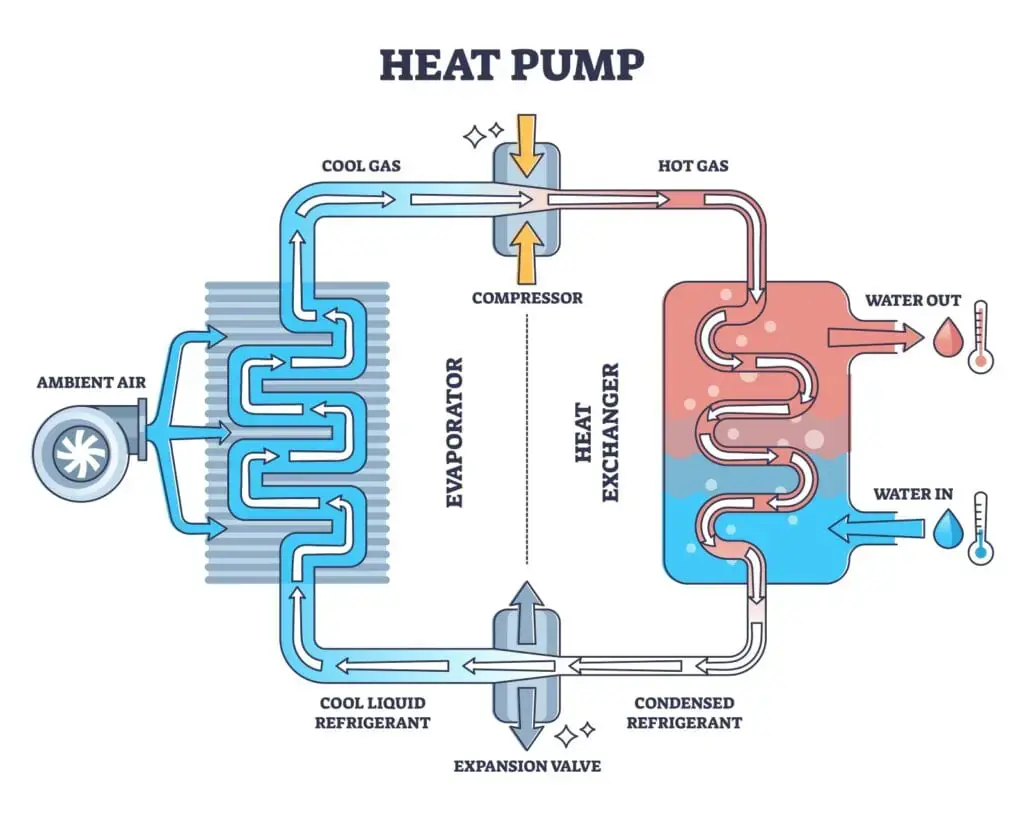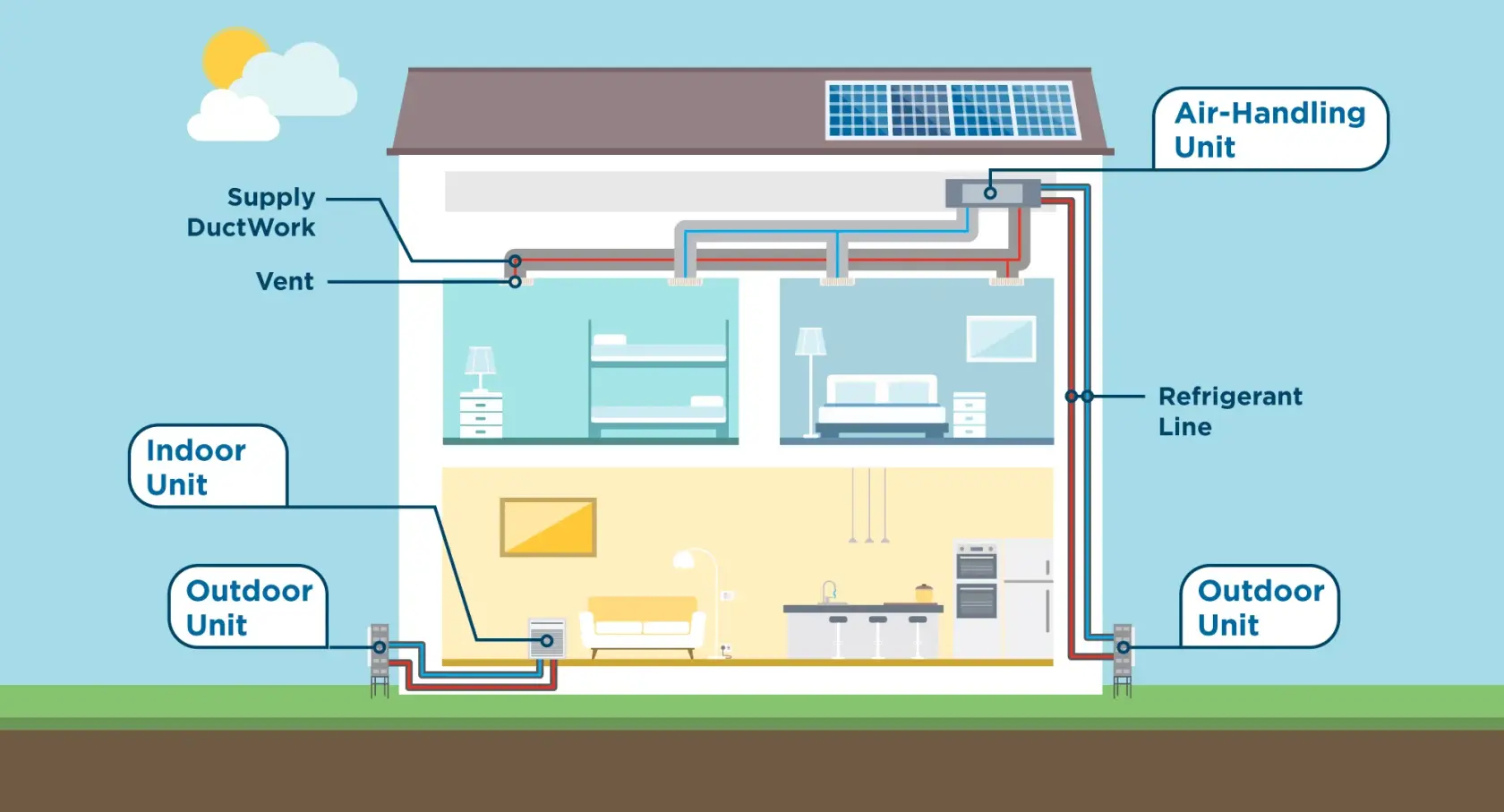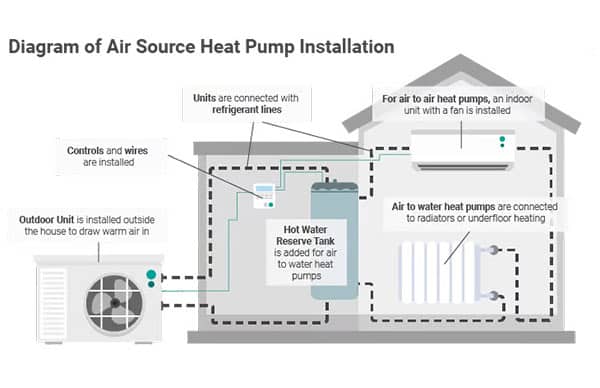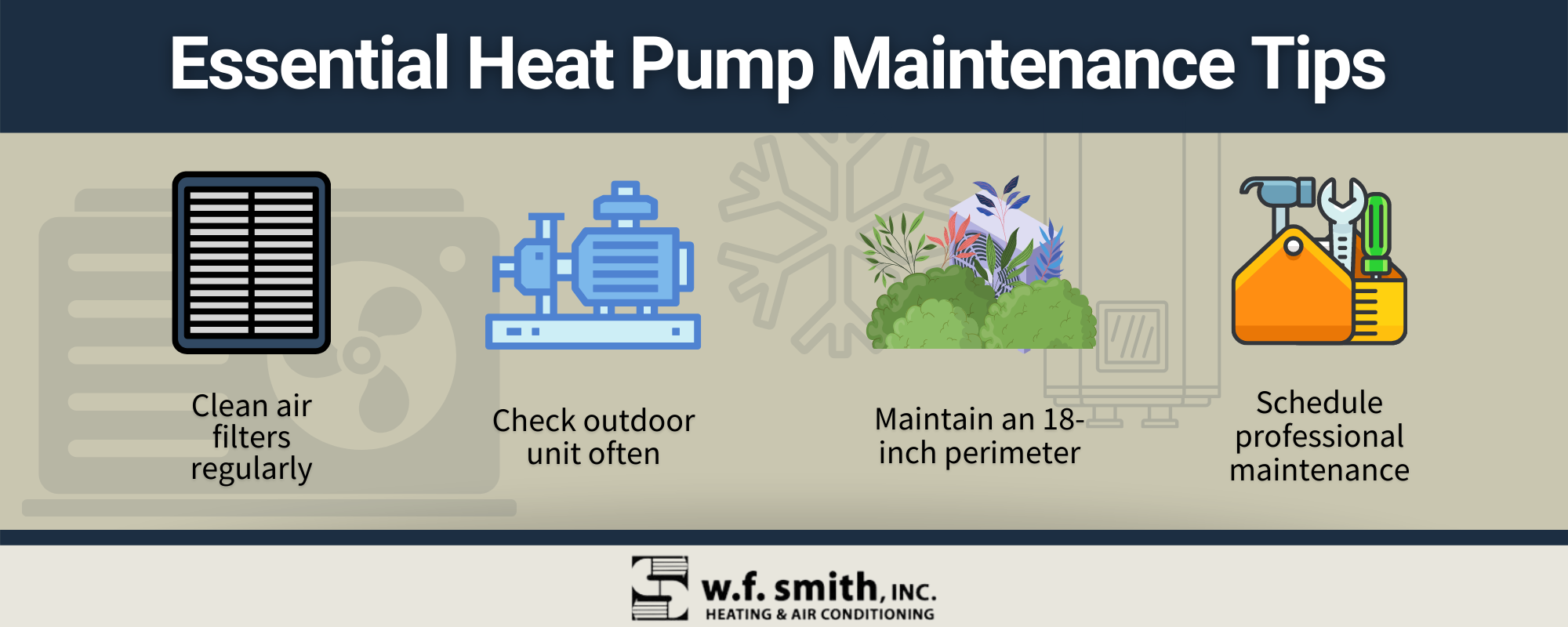📘 Heat Pump Basics
📷 Heat Pump System Diagram
Figure 1: Reversible heat pump cycle for heating and cooling operation.
🧰 What is a Heat Pump?
A heat pump is an HVAC system that provides both heating and cooling by transferring heat between indoor and outdoor environments. Rather than generating heat through combustion or resistance, it moves heat using a refrigerant cycle.
In cooling mode, it works like a traditional air conditioner. In heating mode, it reverses the cycle to extract heat from outdoor air and deliver it indoors—even in cold weather.
Common applications include:
-
Residential homes and apartments
-
Light commercial buildings
-
Zoned ductless mini-splits
-
Electrification and net-zero energy designs
🔧 Key Components
🔹 Compressor
-
Circulates refrigerant through the system
🔹 Indoor Coil (Evaporator in cooling, Condenser in heating)
-
Transfers heat to or from indoor air
🔹 Outdoor Coil
-
Rejects or absorbs heat from outside air
🔹 Reversing Valve
-
Allows the system to switch between heating and cooling modes
🔹 Expansion Device
-
Reduces refrigerant pressure for evaporation cycle
🔹 Air Handler / Blower
-
Moves air across the indoor coil and into the duct system or ductless.
Figure 2: Typical air-source heat pump components.
🌡️ Operating Modes
📏 Typical Specs
-
Tonnage Range: 1.5 to 20 tons (residential to light commercial)
-
Types: Air-source, water-source, ground-source (geothermal)
-
Voltage: 208–230V or 460V (single or three-phase)
-
Efficiency Ratings:
-
SEER (cooling), HSPF (heating), COP (heating efficiency)
-
🧱 Installation Considerations
Figure 3: Diagram of Air Source Heat Pump Installation
-
Proper refrigerant line sizing and length
-
Clearances for airflow around outdoor unit
-
Electrical disconnect and weather-rated whip
-
Line insulation, condensate drain, and mounting pad or bracket
-
Consider supplemental heat in cold climates (resistance or dual fuel)
🧼 Maintenance Requirements
Figure 4: Essential Heat Pump Maintenance
✅ Advantages
-
Provides both heating and cooling
-
Very efficient, especially in moderate climates
-
Reduces reliance on fossil fuels
-
Supports decarbonization and green building goals
-
Eligible for energy rebates and incentives
⚠️ Disadvantages
-
Reduced heating capacity in extreme cold
-
May require backup/emergency heat source
-
Outdoor unit must be kept clear of snow/debris
-
Initial cost higher than basic A/C + furnace system
🛠️ Common Issues
-
Icing on outdoor coil (requires defrost mode)
-
Low refrigerant charge causing poor performance
-
Faulty reversing valve stuck in one mode
-
Indoor unit leaking due to clogged drain
-
Noisy operation if vibration isolation is missing
📎 Training & Resources
🧠 Summary
Heat pumps are an energy-efficient solution for year-round comfort. By reversing the refrigeration cycle, they provide both heating and cooling, making them ideal for homes and light commercial buildings — especially in regions seeking sustainable HVAC options. With proper sizing, maintenance, and installation, they can significantly reduce energy costs and environmental impact.




